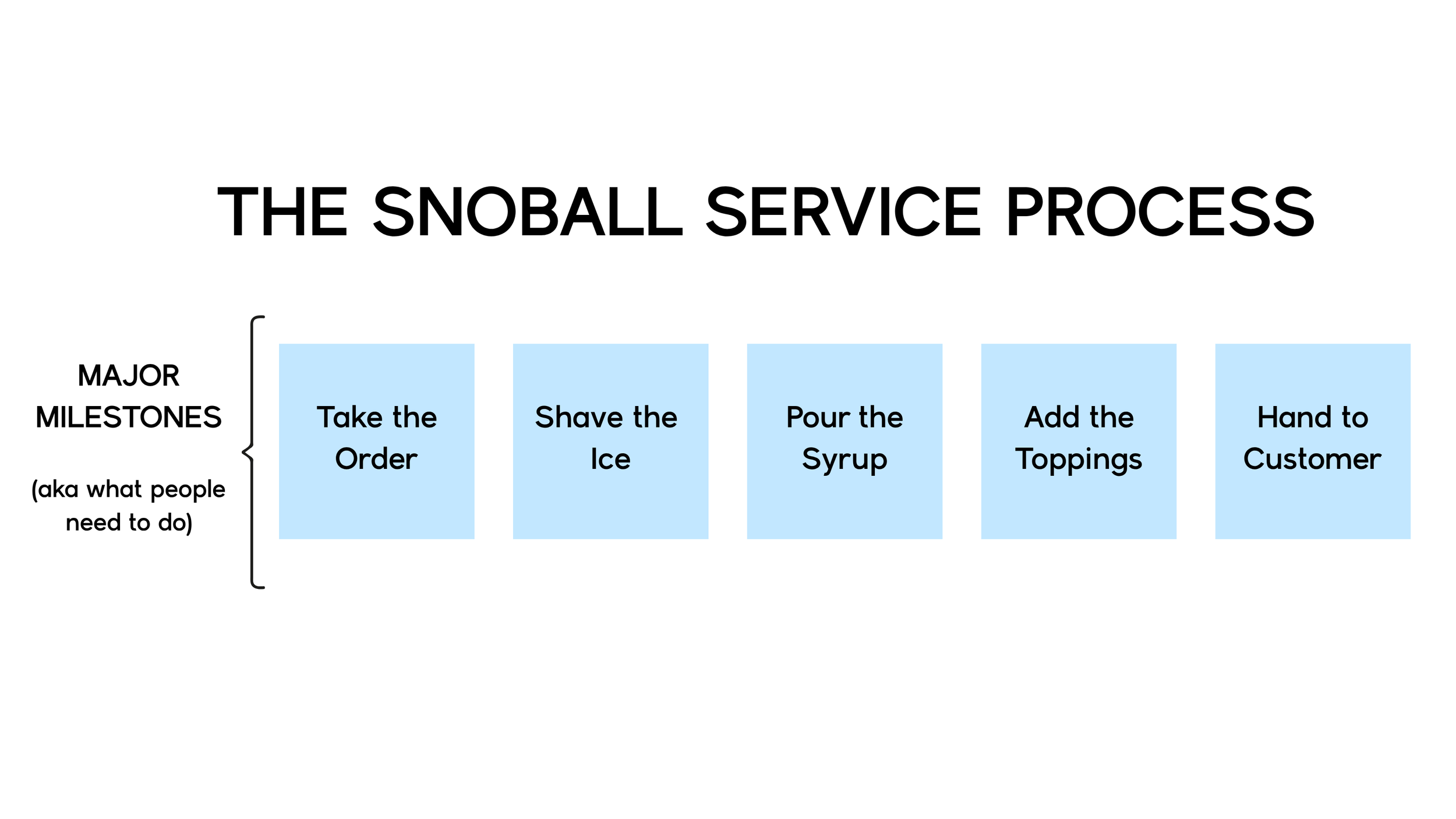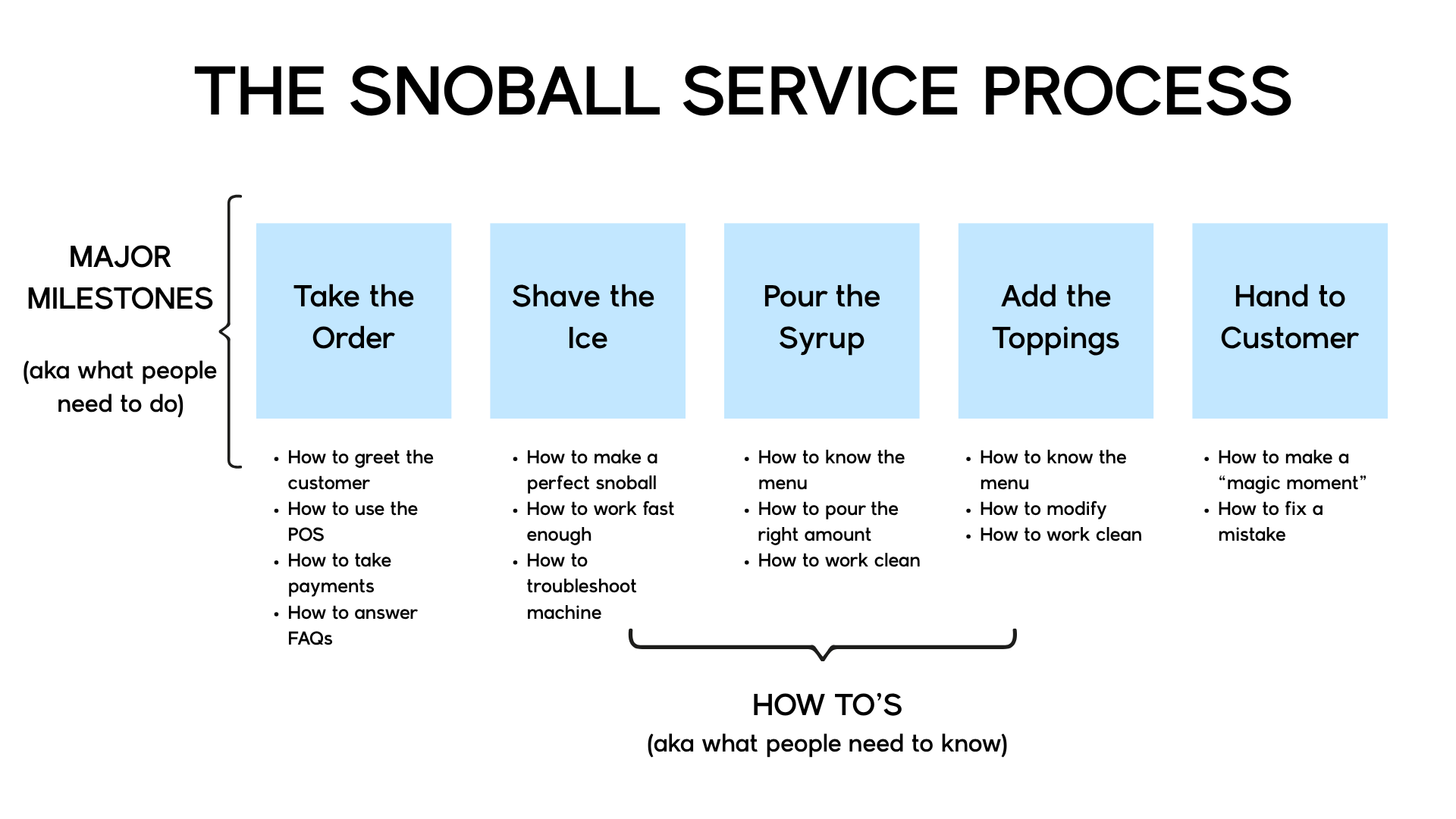You Don’t Have a Process Problem—You Have a Change Problem
The 5 Building Blocks of Using Process to Drive Change
People tell me they are “having trouble with process.” But you know what most of them are actually having trouble with?
Communicating change. Specifically, one of the following two changes:
Something broke—and what used to work isn’t working anymore
Something’s working—and it’s time to scale it up without breaking it
We’re walking into this assuming you’ve done the preliminary work of finding something that worked at one point in time. Of finding initial product-market fit. If you haven’t, then that’s your starting point and this is not for you (yet).
But product market fit isn’t a finish line; it’s a moving target. We have to fight for it. Our customer changes, their priorities change, our team changes, our costs change.
So what do you do when you, at one time, found something that worked…but now it’s either broken, or it’s working so well you want to do it on a much larger scale?
What do you do when you want to change everything?
“When you’re finished changing, you’re finished.”
— Benjamin Franklin
What is Process, Really?
Ask 50 people and you’ll get 50 answers—from a simple map of steps to a 37-page procedure with no detail left behind. For today’s purpose, I’ll offer the following definition:
A process is a set of intentional steps that lead to a desired change.
Why exactly is that so hard? You decide what you want, then you map out the steps it will take to get there.
It’s hard because complexity creeps in when those steps are being performed by different people, at different points in time, inside of continuously changing environments.
Rallying the right people around the right change and the right steps to get there takes a lot of work. And if you can’t get work done through other people, you might build a fantastic solo business…but you’ll never build a sustainable company.
That makes not only the process itself, but also how you communicate it as it changes, the underpinning of your entire operation. And often the difference between success and failure.
Process is a big and somewhat complex concept. But don’t worry, we can make it easier by breaking it down into its components and then working through each one of those in a systematic way.
The 5 Pillars of Process
Map major milestones
Develop a systematic, repeatable way to teach
Capture & share
Assess & keep accountable
Keep it alive
1 - Map major milestones
Before getting into the weeds of a process, make sure you first understand the major steps from start and finish. Sound too simple? Most skip this step, then end up overcomplicating things.
In most cases, there should be no more than a dozen key steps. If there are, some of the steps are likely substeps of the others, not major milestones. Or you could have two distinct processes on your hands, not one.
(Don’t forget to include hand off points, if they apply. Most problems creep in at those transitional points where communication is most likely to break down.)
Here’s an example of how we would have mapped a process in my first business, a shaved ice shop. This was the core thing we did, the thing that made money:
There’s quite a bit more to say about how to take the order, how to shave the ice, how to pour the syrup, how to add the toppings, and how to hand the finished product to the customer.
But the process doesn’t tell us how to do it, it tells us what to do. Each step is actionable, which is why each step starts with a verb when it’s written down.
Understanding a process conceptually first, in its simplest form, is the foundation for everything that comes next.
“Everything should be made as simple as possible, but not simpler.”
— Albert Einstein
2 - Develop a systematic, repeatable way to teach
Notice I didn’t just say “Next, teach the process.”
Most of you have either thrown your new hire into the fire (sometimes the best way or the only way), or you’ve taught the process. Then for the next person, you teach it again. Then again.
But when you “just” teach the process, instead of developing a systematic, repeatable way to teach it, two things happen:
The people learning the process learn how to do it in different ways
The people teaching the process are spending more time on training than is necessary, therefore wasting time that could be used on value creation
The game of telephone is fun at summer camp (one of my favorites actually), but it’s a poor way to train your people.
Instead, you should invest time into developing a systematic, repeatable way to teach the process so that:
Training is effective—everyone who learns the process learns it the “right” way
Training is efficient—”just enough” time is spent training, no less and no more
So how do you teach in a way that is systematic and repeatable? By doing these two things:
1 - Map each major milestone to associated how to’s
After you’ve mapped out the major milestones (step 1 above), next you’ll map each of the milestones to a handful of “how to’s.” Maybe 3-5 tops. These are the more bite-sized procedures or sets of best practices a person needs to know.
Most of your institutional knowledge is hidden here, and it probably feels like a big ball of yarn in your brain. Parsing it out in a systematic way starts to untangle it a little bit at a time.
Here’s what that looked in my shaved ice shop:
Does each procedure or best practice really have to start with “How to…?” Not necessarily, but I’ve found it really helps when you’re trying to distinguish what people need to know from what people need to do.
2 - Develop learning assets
With your list of how to’s, you’ll develop ways to teach someone how to actually do that thing. A learning asset could be…
A simple list
A short video
A set of best practices
A decision-making formula
Whatever best teaches that particular how to. Here’s what that looked like for the first two major milestones at the shaved ice shop:
So in summary…
The major milestones define what people need to do
The how to’s define what people need to know
The learning assets help them know it
Stop knowledge sharing to people and start knowledge sharing to a system. It can take a little while to get that system’s flywheel spinning, but once it’s flying, it takes on a life of its own.
3 - Capture & share
The original Coca-Cola recipe is famously kept in a vault at the World of Coca-Cola museum in Atlanta. Before it was moved there, it lived in a bank vault for almost 90 years.
Why? Because the recipe isn’t just a part of the business; the recipe is the business.
You might not have Coca-Cola-level trade secrets, but if you have a working business, you do have intellectual capital that’s yours and yours alone—a way of doing things that’s unique.
Which means that, like Coca-Cola, you need your own single source of truth. A simple way to say: “We don’t add, and we don’t subtract. We do it this way.”
The single source of truth at my first job was a binder at the front desk. That was the best option for that time, but we have better options now. My go-to is PlaybookBuilder, a knowledge management and training platform that helps you easily capture and share company processes.
Because whether your “secret formula” is how you close deals, how you deliver client results, or how you onboard new hires—your business depends on people doing the right things, the right way, every time. And the only way that happens is if the formula lives somewhere other than your head, where your people can find it and actually use it.
“In the beginner’s mind there are many possibilities, but in the expert’s there are few.”
— Shunryu Suzuki, Zen teacher
4 - Assess & keep accountable
Capturing and sharing processes won’t lead your people for you. There’s no app for that. What it will do is give you an opportunity to create a watershed moment: before the process was communicated and after the process was communicated.
Because do you really want to continue spending time developing this systematic, repeatable way to teach without a way to know if anyone actually understood it or not? (The answer is no, you do not.)
Assessing your team’s knowledge could look like:
A simple follow up question at the end of the training asking for the main takeaway
A 10-question multiple choice quiz assessing the nuance of what they learned
A video upload of the learner demonstrating what they learned
What’s important is that you draw a line in the sand here, so that going forward, you’re not stuck wondering, “Is this a training problem or a performance problem?” If you did your part (that’s the training, the communicating of the process), then you’ll already know the answer.
“The most serious mistakes are not being made as a result of wrong answers. The truly dangerous thing is asking the wrong questions.”
— Peter Drucker
5 - Keep it Alive
Once you’ve 1) mapped the milestones, 2) systematically taught, 3) captured and shared, then 4) assessed and kept accountable, you have a living, breathing business playbook. The single source of truth that guides what you do and how you do it, even as those things change.
Now, you must 5) Keep it alive.
Think about Wikipedia for a minute. Wikipedia is so much more than a digital version of an encyclopedia. The value of Wikipedia—which in dollars is estimated at over $200 million—is not in the words on the webpages; it’s in the mechanism that ensures people are constantly updating what’s there.
The information itself is almost irrelevant because so much of it will change tomorrow anyway. What is relevant is that there’s a simple method for capturing, verifying, and finding important information—even as it changes.
Encyclopedias aren’t obsolete because it became more convenient to look stuff up on our computers…encyclopedias are obsolete because it became impossible to update them fast enough.
You’ll maintain your business playbook the same way you maintain anything else in your business: Make it a priority. Make someone accountable. Refine as needed.
Because process isn’t just about writing things down. It’s about building a business that can change—on purpose
When you’re ready, here’s how we can help:
Process Clarity Workshop
A 1-day intensive where we will DEFINE your 3 most critical processes—how you sell, how you deliver, and how you collect money—then identify what people need to know in order to execute on those processes. $3,500
Business Playbook Bootcamp
A 1-day intensive followed by a 30-day launch period where we will DEFINE your 3 most critical processes, DOCUMENT them in playbooks you’ll use to train your team, then DELEGATE them by accelerating adoption and driving accountability. $7,500
The PlaybookBuilder Process Cohort
A guided 6-week sprint where you’ll finally get your playbook done alongside 8-12 other business leaders—with a proven methodology, real-time work blocks, and live coaching. Plus, try PlaybookBuilder FREE for the full 6 weeks. $1,500
Hi, I'm Elizabeth
After growing and selling my first business in the food industry, I started Untangled to help other business owners scale their business without losing its soul.
I've been working with fascinating, smart, growth-minded entrepreneurs ever since. Most have rapidly growing small businesses where it's challenging to keep everyone aligned around doing things the same way.
Curious about working together? Reach out here: elizabeth at untangleyourbiz dot com or send me a DM.




